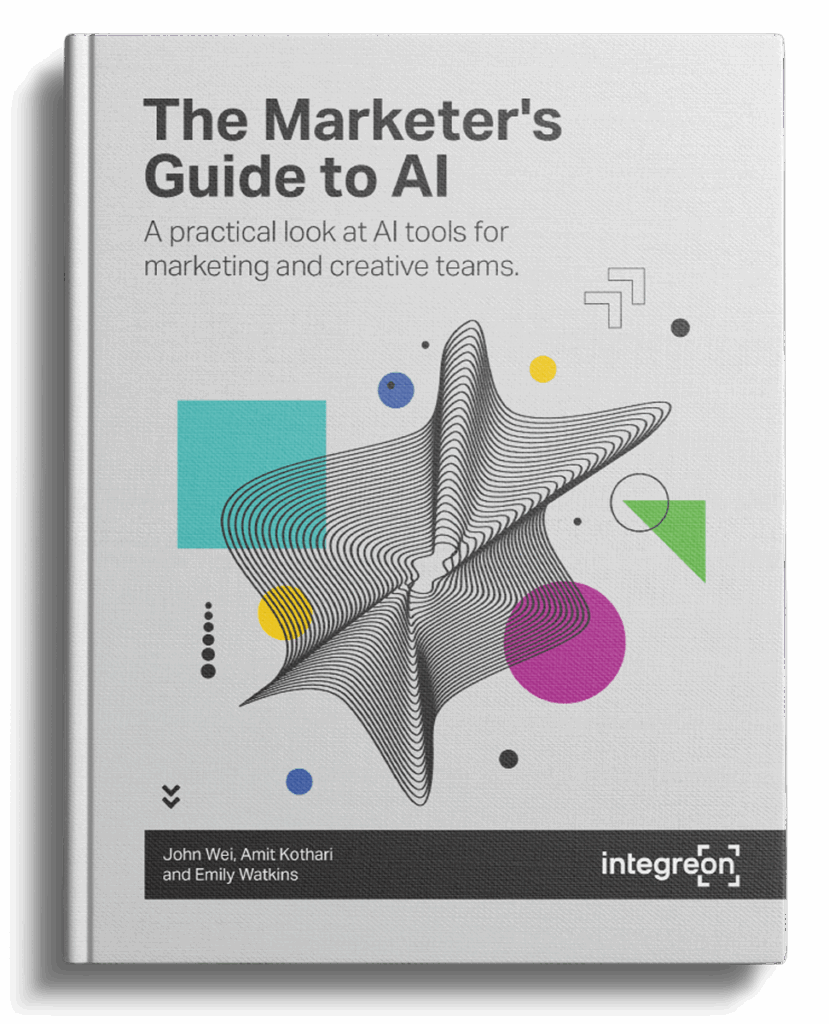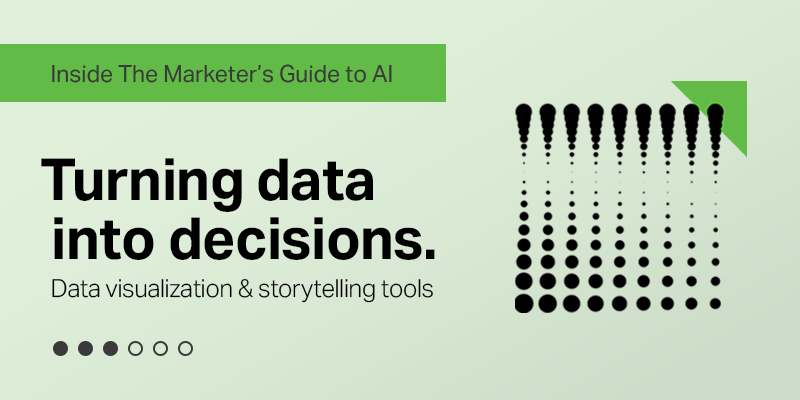Key Takeaways
Visualization aids communication. Marketing teams that can translate data into stories lead smarter conversations.
The tech is only half the solution. True efficiency comes from combining AI tools with strong processes and oversight.
The human touch still matters. AI creates the visuals, but marketers bring the context and credibility to craft the story.
Last time in our blog series “Inside the Marketer’s Guide to AI”, we explored practical tips for using AI tools to create images and visual assets faster and on brand. Now, we’re turning to another challenge: making sense out of the flood of data that marketing teams handle every day and turning it into stories and visualizations that actually drive decisions.
Because having data isn’t the same as understanding it. According to a recent survey conducted by Canva, 89% of professionals engage with data at least weekly, yet 78% still experience data anxiety. And with global data projected to reach over 393 zettabytes (that’s 393 billion terabytes!) by 2028, it’s more than clear that teams don’t need more data – they need help making sense of it.
That’s where AI can help bridge the gap. AI tools today can turn messy spreadsheets into dashboards, charts, and presentation-ready visuals in minutes. But the real advantage isn’t prettier reports, it’s clarity. AI helps surface patterns, highlight what matters, and free up time to focus on the “so what” of the data story.
A 2025 paper on visualization effectiveness reports that using data-visualization tools can boost decision-making efficiency by up to 25% and cut time spent on data analysis by nearly 30%. Still, tools alone don’t fix the problem. The traditional patchwork of dashboards and platforms can create more friction than insight. The answer isn’t more software, it’s deliberate structure, thoughtful integration, and smarter use of AI.
It starts with the basics:
Unify your data sources.
Even the best visualization tools will struggle if your inputs are inconsistent. Standardize where your data lives and how it’s formatted before you visualize it.
Define who owns what.
Clear ownership over dashboards, updates, and insights keeps reports from becoming cluttered or outdated.
Automate the repeatable.
Let AI handle recurring reporting and formatting so your team can spend more time on interpretation.
Design for decisions.
Every dashboard should answer a specific business question – not just display metrics.
What AI can do:
- Turn raw data into clean, ready-to-share visuals
- Surface key trends and patterns
- Tailor outputs for different audiences without rebuilding reports
- Reduce manual reporting work (so you can focus on insights and strategy)
At the end of the day, AI doesn’t tell the story – you do. Tools can simplify, visualize, and speed things up, but the story still needs a trained eye to make it resonate. When you align technology with human perspective, data stops being just information and becomes a story that drives clarity, confidence and action.
Download your copy of The Marketer’s Guide to AI for a closer look at data visualization and storytelling tools.

The Marketer's Guide to AI
What you will learn:
- A practical overview of AI tools available for marketing and creative teams.
- Workflow-focused guidance for fitting AI into day-to-day processes.
- Integration tips for adopting AI effectively while preserving creativity.
- A quick-reference chart of 50 leading AI tools at a glance.


